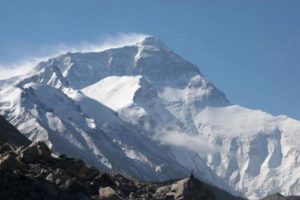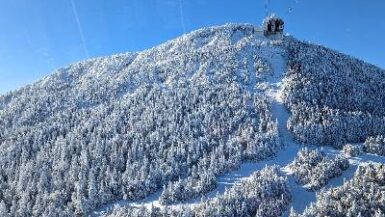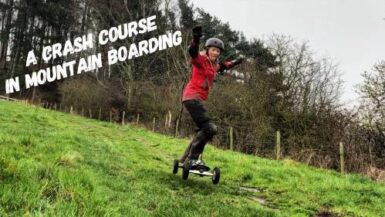
The deaths of 11 climbers on Mount Everest this year has spurred the Nepalese government into action…sort of. Yes, Nepal’s Ministry of Tourism has released a 59-page report proposing changes to rules covering guiding and mountaineering on Mount Everest. But according to seminal climber and mountaineering expert Alan Arnette, much will remain the same, and what is changed appoears to be Nepalese-centric.
Arnette has a detailed breakdown of all the proposed rules on his website here. The biggest proposed changes are: 1) before being approved for a permit to climb Everest, climbers first must have summitted a 6500+ meter peak in Nepal; and 2) only Nepalese citizens will be able to be leaders, guide and elevation workers.
This accomplishes two important goals. First and most importantly, it keeps rich, but inexperienced newbs off Mount Everest. No sport in the world is more dangerous than high altitude climbing; death is the background noise of mountaineering. Everest is the highest mountain in the world – the final 3,000 feet or more firmly within the iron grip of the death zone. The seeming ease of which some packagers can ferry people up and down the highest mountain on the planet tends to make people forget that fact or at least underestimate it, and that’s even before factoring in polar temperatures and storms with hurricane winds.
As Pemba Sherpa stated after the 2008 K2 disaster, “Westerners love adventure. My people love climbing.” By requiring that those seeking to summit Everest must climb another Nepalese 6,500+ peak first can only improve the quality of climber on Everest. It will also deter rank amateurs. It’s like a sign you’d see on the door of a business: SERIOUS INQUIRIES ONLY.
Secondly, it will give a boost to Nepalese tourism. I’m not one to go off making wild claims of “Climbing Everest is unethical” or “It’s racist for Westerners to prey on Sherpas” or any other position that will polarize climbing by race or economic status. But it’s always great to see Nepal’s rich history and culture expand; Nepalese mountaineering is far more than just Mount Everest, and it’s time some of the other mountains, like Annapurna, Nuptse, or Mera. Again, Arnette has a phenomenal breakdown of all Nepalese mountains that qualify. Print it out and use it as a ticklist. Yes, the requirement that the 6,500+ peak be Nepali is annoying since it excludes some mountains that speak for themselves when it comes to whether the successful climber could handle Everest, (most notably Elbrus, Aconcagua, Kilominjaro, McKinley, Meru, the Matterhorn, and Mont Blanc, among many others. Four of those listed are the highest peak in their respective continents). But Nepal has every right to promote is own pecuniary interests by requiring those wanting to go to Everest to successfully summit something else first.
Happily, much remains the same at Everest as well. Unlimited Everest climbing permits will be issued, a climber’s mountaineering experience requirements remain vague with no centralized evaluation process, the Everest permit fee remains $11,000 per person with a $4,000 trash deposit per team, and it’s still unclear whether they can start choppering supplies and gear to Camp 2 in order to reduce the number of times Sherpas have to pass through the dangerous Khumbu Icefall.
Alan also does an excellent job of reviewing China’s rules for tackling Everest from the Tibet side.
As a side note: Is it ethical to climb Mount Everest? Yes it is! There is a symbiosis between climber and Sherpa/Balti/ you name your high altitude porter. Respect, trust, friendship: those bonds are stronger than the socio-economic or cultural differences that appear top separate us far more than they actually do in reality.




